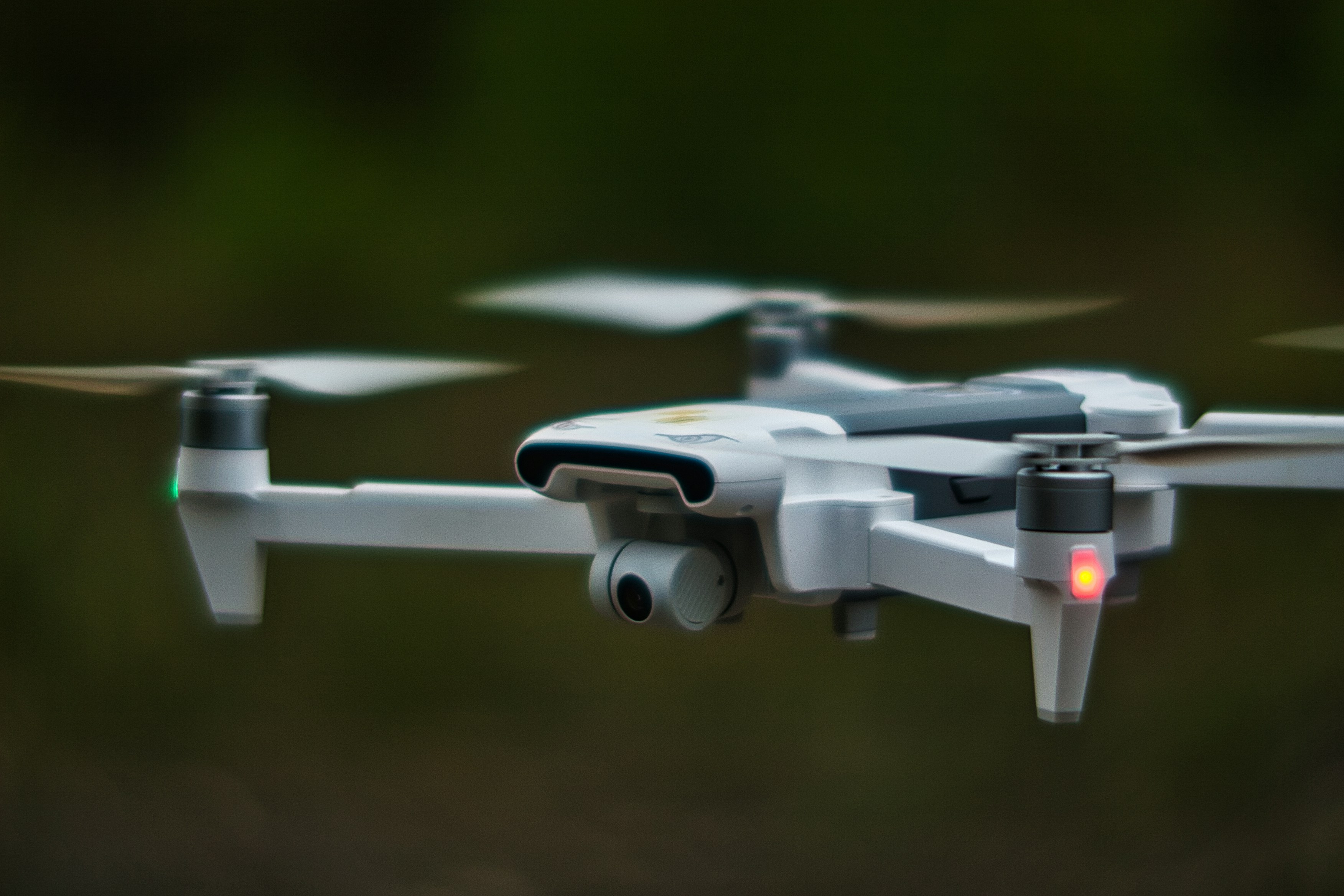
UK Visa & Work Permits Explained: Your Essential Guide for International UAV Professionals
Unmanned Aerial Vehicles (UAVs)—often referred to as drones—have become one of the fastest-evolving segments in aviation. They now play pivotal roles in fields as varied as cinematography, emergency response, logistics, agriculture, and even environmental conservation. The United Kingdom has positioned itself as a leader in UAV innovation, with government-backed research initiatives, vibrant tech start-ups, and a growing number of companies seeking specialists in drone design, manufacturing, and operations.
For international UAV professionals hoping to join this exciting sector, navigating the UK visa and work permit process is a critical first step. This guide offers a comprehensive look at the main visa pathways, eligibility criteria, and practical tips to help UAV experts advance their careers in the UK. Whether your expertise lies in drone hardware engineering, flight operations, software development, or remote sensing, having the right visa will pave the way to success in Britain’s dynamic UAV ecosystem.
1. The UK’s Growing UAV Ecosystem
Before delving into the visa framework, let’s examine why the UK stands out as a global hub for drone technology:
Innovative Start-up SceneCities like London, Bristol, Manchester, and Edinburgh boast vibrant tech communities. Drone start-ups specialising in everything from agriculture and infrastructure inspections to urban air mobility continue to emerge and attract investment.
Forward-Thinking RegulationThe UK’s Civil Aviation Authority (CAA) has developed regulations that balance safety with innovation, enabling drone pilots and companies to carry out commercial operations with clarity and support.
Academic and Research ExcellenceTop universities, such as Imperial College London, the University of Bristol, and the University of Southampton, drive UAV-related research in areas like swarm robotics, propulsion systems, and AI-driven navigation. Collaboration between academia and industry fosters new pilot programmes and R&D partnerships.
Defence and Security DemandThe UK’s defence sector has a strong interest in UAVs for surveillance, logistics, and unmanned combat systems, creating roles for professionals skilled in both hardware engineering and software development.
Diverse Commercial ApplicationsBeyond defence and research, UAVs serve emerging needs in film production, drone delivery, environmental monitoring, and emergency response—expanding the range of career paths for drone experts.
Against this dynamic backdrop, the UK attracts an international pool of UAV engineers, pilots, data analysts, and regulatory specialists. However, you’ll need the correct visa if you’re a non-UK national aiming to work in this domain.
2. Navigating the UK Immigration System
Since Brexit, most EU and EEA nationals must secure a work visa to live and work in the UK, unless they have settled/pre-settled status. The UK’s points-based immigration system provides multiple routes, but for UAV professionals, two main categories typically stand out:
Skilled Worker Visa – Requires sponsorship from a licensed UK employer.
Global Talent Visa – For individuals recognised or emerging as leaders in digital technology, engineering, research, and similar fields.
Alternative routes—such as the Start-up Visa, Innovator Visa, or Graduate Visa—may apply in specific scenarios (entrepreneurship, recent graduates, etc.) but are generally less common for established drone industry professionals. We’ll explore each major option, focusing on how they cater to UAV talent.
3. The Skilled Worker Visa
Previously known as the Tier 2 (General) Visa, the Skilled Worker Visa is a popular route if you have a firm job offer from a UK sponsor. UAV professionals—such as drone software engineers, mechanical designers, or flight operations managers—often use this route when joining established companies or start-ups with sponsor licences.
3.1 Eligibility Criteria
To qualify for a Skilled Worker Visa, you must:
Have a Valid Job OfferYour prospective employer must hold a Home Office Sponsor Licence. This licence authorises them to recruit non-UK staff. Many larger drone companies, consultancies, or tech firms will have such a licence in place.
Meet the Minimum Salary ThresholdTypically £26,200 per year or the “going rate” for your occupation code—whichever is higher. UAV roles in engineering or software often exceed this, but always confirm the up-to-date guidelines.
Satisfy the Required Skill LevelThe role must be at or above RQF (Regulated Qualifications Framework) Level 3. Positions requiring UAV engineering, design, or advanced operations typically surpass this benchmark.
English Language ProficiencyYou need CEFR level B1 in reading, writing, speaking, and listening—equivalent to IELTS 4.0—unless exempt.
Accumulate 70 PointsPoints are awarded for having a valid job offer (20), meeting the skill level (20), proving English (10), and meeting salary thresholds (up to 20). Extra points may apply if the job code is on the Shortage Occupation List or you hold a relevant STEM PhD.
3.2 Application Steps
Certificate of Sponsorship (CoS)Once your UAV employer confirms your role, they issue a CoS outlining the details (title, salary, start date).
Online ApplicationComplete the form via the UK government’s website, paying the application fee plus the Immigration Health Surcharge (IHS). Upload documents like the CoS, passport, proof of English, and any required financial evidence.
Biometric SubmissionProvide fingerprints and a photo at a visa application centre or via the UK Immigration: ID Check app if you’re eligible.
DecisionProcessing typically ranges from three to eight weeks. Priority services can shorten wait times to five days or even 24 hours, for an additional cost.
3.3 Switching from Another Visa
If you’re already in the UK (e.g., on a Graduate or Student Visa) and land a UAV job with a sponsor-licensed company, you can switch to Skilled Worker status without leaving the country, provided you fulfil all requirements.
3.4 Benefits and Drawbacks
Pros
Employer-Supported: Relatively straightforward if you have a confirmed UAV-related offer.
Path to Settlement: After five continuous years under Skilled Worker, you can typically apply for Indefinite Leave to Remain (ILR).
Common Route: Larger drone employers often sponsor skilled migrants.
Cons
Tied to Employer: Changing jobs requires obtaining a new CoS.
Salary Criteria: Some junior drone roles or freelance pilot projects may not meet the threshold.
If you’ve already secured a UK-based UAV job, the Skilled Worker Visa is usually the most direct route to begin your aerial career in Britain.
4. The Global Talent Visa
For experienced or high-potential professionals in digital tech, engineering, or innovation-heavy fields, the Global Talent Visa (formerly Tier 1 Exceptional Talent) can be a game-changer. Rather than needing an employer sponsor, you apply by securing an endorsement that confirms your leadership or significant contributions in your field.
4.1 Endorsement Pathways
Historically, tech professionals sought endorsement via Tech Nation, which has announced closure. The UK government states a new endorsing body will handle digital technology endorsements in a similar way. UAV engineers working on AI-driven navigation, advanced drone software, or cutting-edge aerial robotics might qualify under these criteria, especially if their work blends digital innovation and hardware engineering.
If your UAV focus is more academic or research-heavy (e.g., advanced autonomous flight algorithms, swarm intelligence), bodies like UK Research and Innovation (UKRI) or the Royal Academy of Engineering could be options, depending on your achievements.
4.2 Two-Stage Application
Stage 1 – EndorsementYou must demonstrate your accomplishments or potential. This could include research grants, high-impact publications, patents, open-source UAV software contributions, start-up success, or strong references from industry leaders.
Stage 2 – Visa ApplicationOnce endorsed, you proceed to the Home Office for the Global Talent Visa. Although endorsement strongly indicates success, the Home Office completes the final checks.
4.3 Advantages of the Global Talent Visa
No Sponsor NeededYou can work for any employer, set up your own UAV consultancy, or juggle multiple projects without sponsor approval.
Faster SettlementEndorsed individuals can sometimes apply for ILR after just three years.
FlexibilityPerfect if you pivot between academic drone research, commercial drone solutions, or entrepreneurial ventures.
4.4 Considerations
High Eligibility BarYou must provide robust evidence of your leadership or potential in UAV technology.
Complex DocumentationGathering references, project portfolios, and proof of industry impact can be time-consuming.
The Global Talent Visa is ideal if you’re leading pioneering UAV projects or building widely recognised solutions—perhaps you’ve integrated drones into large-scale logistics, contributed to UAV swarm research, or developed a standout drone platform.
5. Additional Visa Routes for UAV Professionals
5.1 Start-up Visa
For budding UAV entrepreneurs:
Endorsement by a UK university or approved business sponsor.
Two-Year DurationPotential to switch to the Innovator Visa if your drone business achieves growth milestones.
5.2 Innovator Visa
For more established entrepreneurs or scale-up founders:
At Least £50,000 in investment funds.
Genuine Innovation in UAV technology.
Possible Settlement after three years, if the business meets success metrics (jobs, revenue, product innovation).
5.3 Graduate Visa
If you’ve recently completed a UAV-related degree (e.g., in robotics or aeronautical engineering) at a UK institution:
Two Years (or Three for PhD) to live and work freely, no sponsorship needed.
Time to Secure Skilled Worker status if you find a sponsor, or gather achievements for a Global Talent application later.
6. Work Permit Requirements & FAQs
6.1 Common Documentation
While specifics differ by visa category, general needs include:
Passport or valid travel ID.
Certificate of Sponsorship (for Skilled Worker).
English Proficiency (IELTS, PTE, or English-taught degree evidence).
Educational Credentials (transcripts, diplomas in engineering, computer science, or related fields).
Financial Proof if required (maintenance funds).
Tuberculosis Test (for applicants from certain countries).
6.2 Processing Times
Skilled Worker Visa: Three to eight weeks, with priority options for faster turnaround.
Global Talent Visa: Endorsement timelines vary; once endorsed, the visa decision is typically a few weeks.
Start-up/Innovator/Graduate: Dependent on endorsement processes and Home Office load.
6.3 Shortage Occupation List
Some engineering or software roles may feature on the Shortage Occupation List, potentially lowering salary thresholds or application fees. Always check government updates to see if your UAV role qualifies.
6.4 Bringing Your Family
Most UK work routes allow dependants (spouses, partners, children under 18). Each needs a separate application, must meet certain financial requirements, and pay the Immigration Health Surcharge.
6.5 Changing Employers
Skilled Worker: Switching employers requires a new CoS and updated visa application.
Global Talent: Complete freedom to move between roles or operate independently.
7. Practical Tips for UAV Professionals
7.1 Start Early
Securing a UK sponsor or building a Global Talent case takes time. Explore roles on specialised platforms like www.uavjobs.co.uk, LinkedIn, or tech job boards. Engage in UAV conferences, hackathons, or online forums to network with prospective employers, co-founders, or endorsers.
7.2 Tailor Your CV
Competition can be stiff, so highlight:
Technical Proficiency: Drone hardware assembly, flight control systems (Pixhawk, ArduPilot), data processing (GIS, photogrammetry), autonomy frameworks (ROS, PX4).
Certifications: The UK’s GVC (General VLOS Certificate) or other relevant pilot qualifications from the CAA or your home country.
Project Outcomes: Did you reduce inspection costs by 30% via drone surveys? Develop an AI-driven collision-avoidance system? Quoting metrics can help you stand out.
Collaborative Work: UAV projects often integrate software, hardware, aeronautics, and regulatory compliance, so emphasise cross-disciplinary experience.
7.3 Prepare for Technical Interviews
Expect multi-stage assessments covering:
Core Engineering: Aerodynamics, flight stability, sensor integration, autonomous navigation algorithms.
Regulatory Know-How: Understanding of CAA guidelines, BVLOS (beyond visual line of sight) operations, or drone deliveries—especially if you’re applying for an operational role.
Scenario-Based Tests: Hypotheticals on dealing with GPS failures, harsh weather, or data security issues.
7.4 Organise Documents Early
References & Letters of Recommendation: Essential if pursuing Global Talent. They should attest to your UAV expertise and industry contributions.
Financial Evidence: If your route requires proof of maintenance funds, ensure your bank statements meet those guidelines.
English Test: If needed, book IELTS/PTE well in advance.
Project Portfolio: If you’re a UAV pilot or developer, highlight your flight logs, code repositories, or past project results.
7.5 Seek Professional Advice if Unsure
If you have questions about visa eligibility, switching routes, or bridging from a prior refusal, consider consulting a UK immigration solicitor or a regulated OISC adviser. Expert guidance can simplify the process and lower the risk of errors.
8. Conclusion
The UK’s UAV sector is on the cusp of extraordinary growth, driven by advanced R&D, commercial deployments, and supportive regulations. From aerial logistics and industrial inspections to cutting-edge research on autonomous flight, Britain provides a stage where drone professionals can shape the future of aviation and robotics. However, charting your path to this exciting domain starts with securing the right work visa.
Key Takeaways
Skilled Worker Visa: Employer-sponsored, leading to settlement after five years—ideal if you have a confirmed UAV-related role.
Global Talent Visa: Offers unparalleled freedom for UAV innovators or leaders, requiring no sponsor and potentially a faster route to permanent residency.
Other Pathways: Start-up, Innovator, and Graduate visas serve entrepreneurs, scale-up founders, and fresh graduates wanting to explore UAV opportunities.
Preparation is Essential: Tailor your CV, line up references, and organise visa documents thoroughly to mitigate stress and expedite your approval.
By aligning your expertise—be it drone piloting, hardware engineering, AI-based navigation, or drone analytics—with the appropriate visa route, you’ll position yourself to thrive in the UK’s vibrant UAV ecosystem. Platforms like www.uavjobs.co.uk can connect you to potential sponsors or endorsers seeking drone professionals. With advanced planning and clarity on visa requirements, you can begin propelling commercial drone solutions, pioneering new research, or building your own aerial technology venture in one of the world’s most forward-thinking drone markets. Safe flights—and welcome to the UK UAV community!


